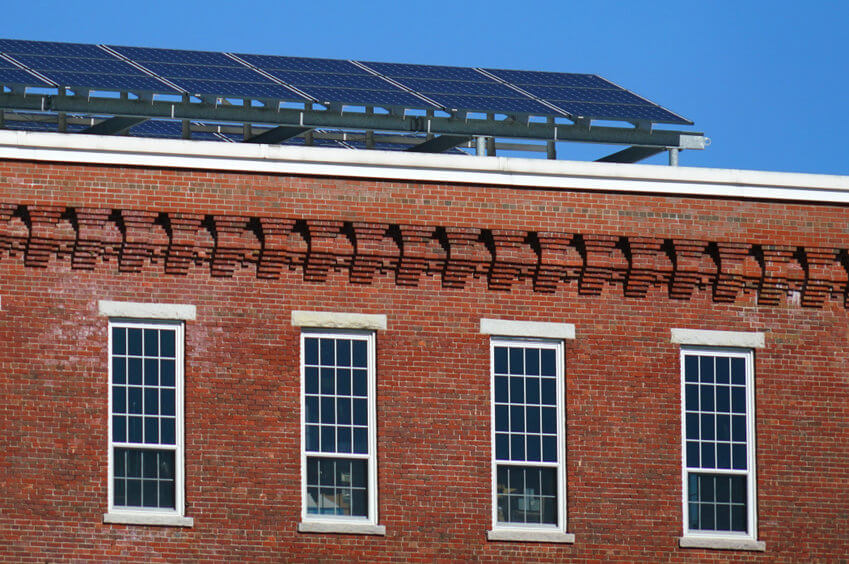
A recent study in Bath, England points out the importance of solar panels on historic buildings with complex architecture. The Centre for Doctoral Training in New and Sustainable Photovoltaics, which is an association of 7 universities and 12 industrial partners that trains doctoral students in solar energy technology, has been studying the benefits of solar panels on historic buildings with significant value to communities. The Bath Abbey was the target for their recent study. Historic buildings such as the Abbey typically have interesting pitches on roofs potentially creating complications with solar panel application and use. But these researchers are working toward solar setups that are advantageous to the building’s efficiency while minimally impacting the structure. Their study showed that solar panels on the Abbey could “produce around 45 Mega-Watt hours per day, which accounts for roughly 35% of the Abbey’s annual usage.” The equivalent of saved carbon dioxide is about 10 tons, which reduces the carbon footprint of the building significantly. They also estimate a savings of about £139,000(which is about $188,000 US dollars) over about 25 years. Even with the complexity of the roof, which is heavily shaded from the many spires and pitches, solar power is still beneficial.
When dealing with beautiful, historic buildings with appealing architecture, it’s a concern for everyone involved whether the panels will be visible to visitors and community members or not. Their model situates the panels in such a way that they are not visible from the street, only minimally from a distance, which bring peace of mind for those who want to see these important structures remain authentic and untouched as much as possible. The team has worked for years on modeling to ensure minimal impact to the structure while bringing the most efficient .
In addition to the green benefits, this project can also bring jobs and will stand as an advertisement for the importance of solar power. One PhD student who performed the modeling design said, “Not only does it make financial sense, but the installation of solar panels on Bath Abbey could inspire reinvigoration of solar PV deployment in the UK which has stagnated over the past 5 years.” This is a step in the right direction for the future of solar energy and a minimal carbon footprint on the globe.
Salt Lake City has some amazing historic buildings that can benefit from the findings of the Bath Abbey project. From the Joseph Smith Memorial Building to the Governor’s Mansion to the Cathedral of the Madeleine, there are many options for similar applications in our hometown. Throughout the United States, the National Park Service has already started installing solar panels on historic buildings, while also taking care to ensure they’re not seen from the ground. When dealing with historic buildings, it’s imperative that any improvement does not negatively impact the character of the property.
The future of solar is growing and improving every day. For any solar related questions and needs, reach out to us today.
